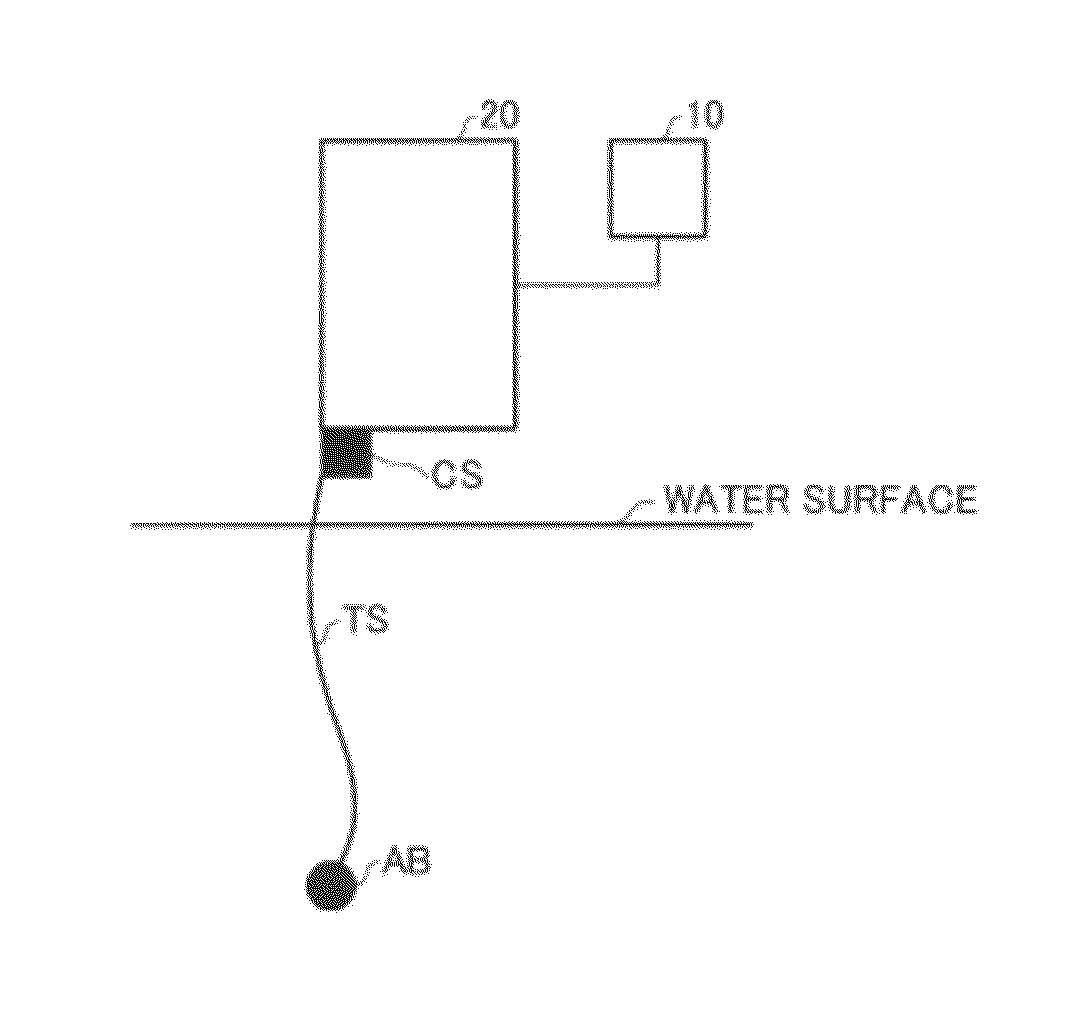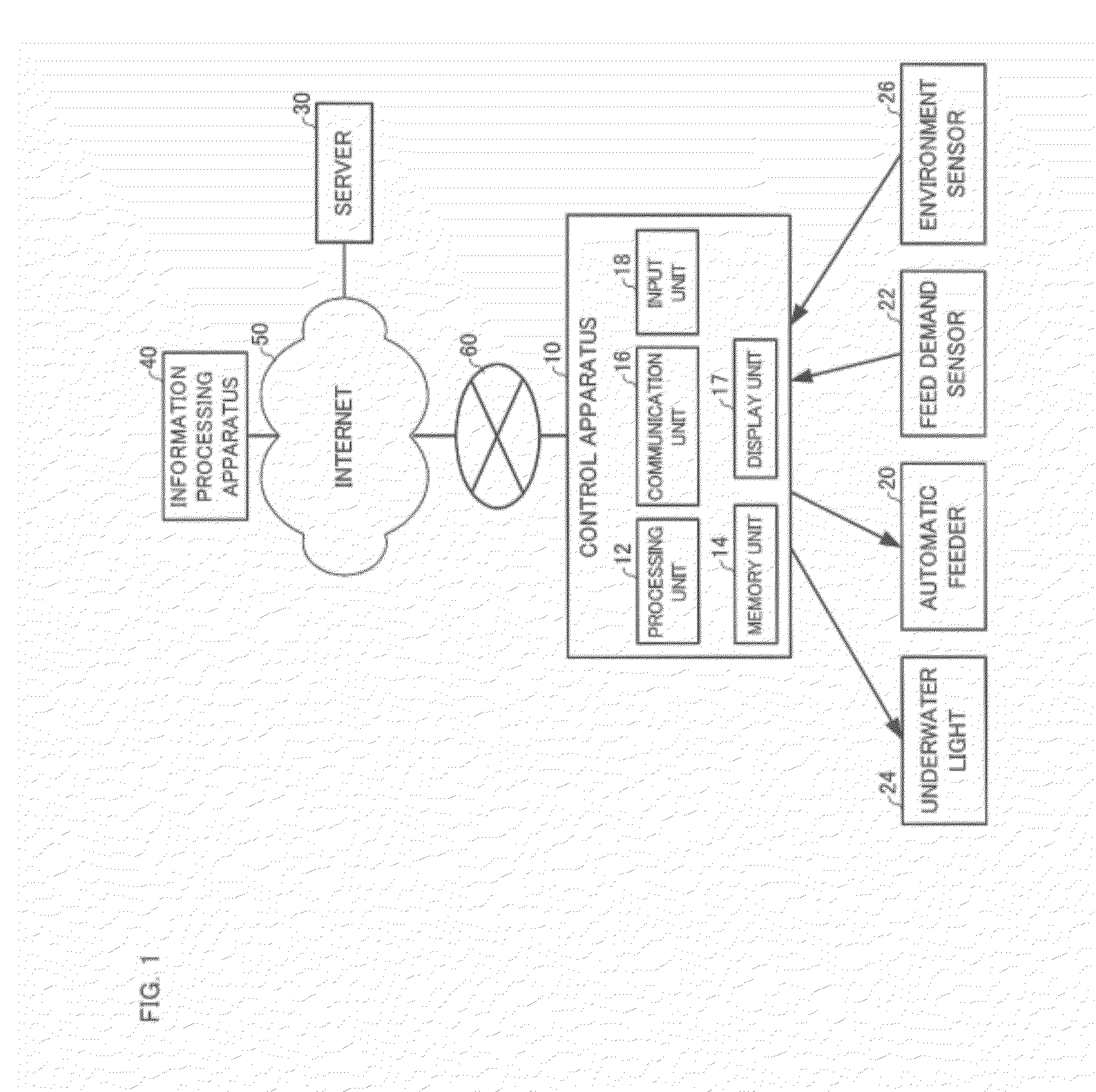Feeding method and feeding system for farmed fish
a technology for farmed fish and supply methods, applied in pisciculture, climate change adaptation, applications, etc., can solve the problems of reducing profitability, underfeeding not only reduces profitability, and slowing fish growth
- Summary
- Abstract
- Description
- Claims
- Application Information
AI Technical Summary
Benefits of technology
Problems solved by technology
Method used
Image
Examples
working example
3. WORKING EXAMPLE
Test Results
3-1. Working Example 1
[0079]FIG. 6 shows test results (working example 1) for the feeding system of the present embodiment.
[0080]Here, a total of 3 cages were prepared, including a cage for performing only automatic feeding in accordance with the feeding schedule (automatic feeding test section), a cage for performing only self-activated feeding using the feed demand sensor (self-activated feeding test section) and a cage for combining automatic feeding and self-activated feeding according to the method of the present embodiment (combined test section), 200 yellowtail were housed in each cage, and a test was performed for two months.
[0081]In the automatic feeding test section, feed was supplied in 200 g lots, a predetermined number of times (initially 60 times and subsequently 30 times) at 2 minute intervals every evening (initially 17:00 and subsequently 16:30), and adjusted so that that the daily feeding rate was 1.3% to 0.6% of the overall weight of ...
working example 2
3-2. Working Example 2
[0085]FIG. 7 shows results from Working Example 2.
[0086]Here, two cages were prepared, including a cage for which hand feeding by a trained person (hand feeding section) was performed and a cage for which automatic feeding and self-activated feeding were combined according to the method of the present embodiment (combined test section). The cages of 10 m×10 m, the size of cages used in actual fish farming, housed 11908 fish and 12599 yellowtail respectively, and a test was performed for two months during a period of low water temperature. The hand feeding by a trained person is performed by finely adjusting the quantity of feed while observing the state of feeding at the water surface. Hence, the average increase in body weight was expected to be larger, and the feed conversion ratio and degree of variation was expected to be smaller than in the regular automatic feeding test section and self-activated feeding test section. In reality, in many fish farms where ...
working example 3
3-3. Working Example 3
[0090]FIG. 8 shows results from Working Example 3.
[0091]Here, to investigate whether similar effects could be obtained for other types of fish, two cages were prepared, including a cage for which hand feeding by a trained person (hand feeding section) was performed and a cage for which automatic feeding and self-activated feeding were combined according to the method of the present embodiment (combined test section). In each of the cages of 8 m×8 m, the actual size of the cages used in fish farming, 6450 greater amberjack fry were housed, and a test was performed for 37 days. In the hand feeding section, feeding was performed twice a day (8:00 and 14:00) for approximately 20 to 30 minutes, and the daily feeding rate was adjusted to 6.6% to 2.6% of the overall weight of the fish.
[0092]Further, in the combined test section, a state was set whereby self-activated feeding (feeding in response to the detection of a feed demand from the feed demand sensor 22) was all...
PUM
 Login to View More
Login to View More Abstract
Description
Claims
Application Information
 Login to View More
Login to View More - R&D
- Intellectual Property
- Life Sciences
- Materials
- Tech Scout
- Unparalleled Data Quality
- Higher Quality Content
- 60% Fewer Hallucinations
Browse by: Latest US Patents, China's latest patents, Technical Efficacy Thesaurus, Application Domain, Technology Topic, Popular Technical Reports.
© 2025 PatSnap. All rights reserved.Legal|Privacy policy|Modern Slavery Act Transparency Statement|Sitemap|About US| Contact US: help@patsnap.com



